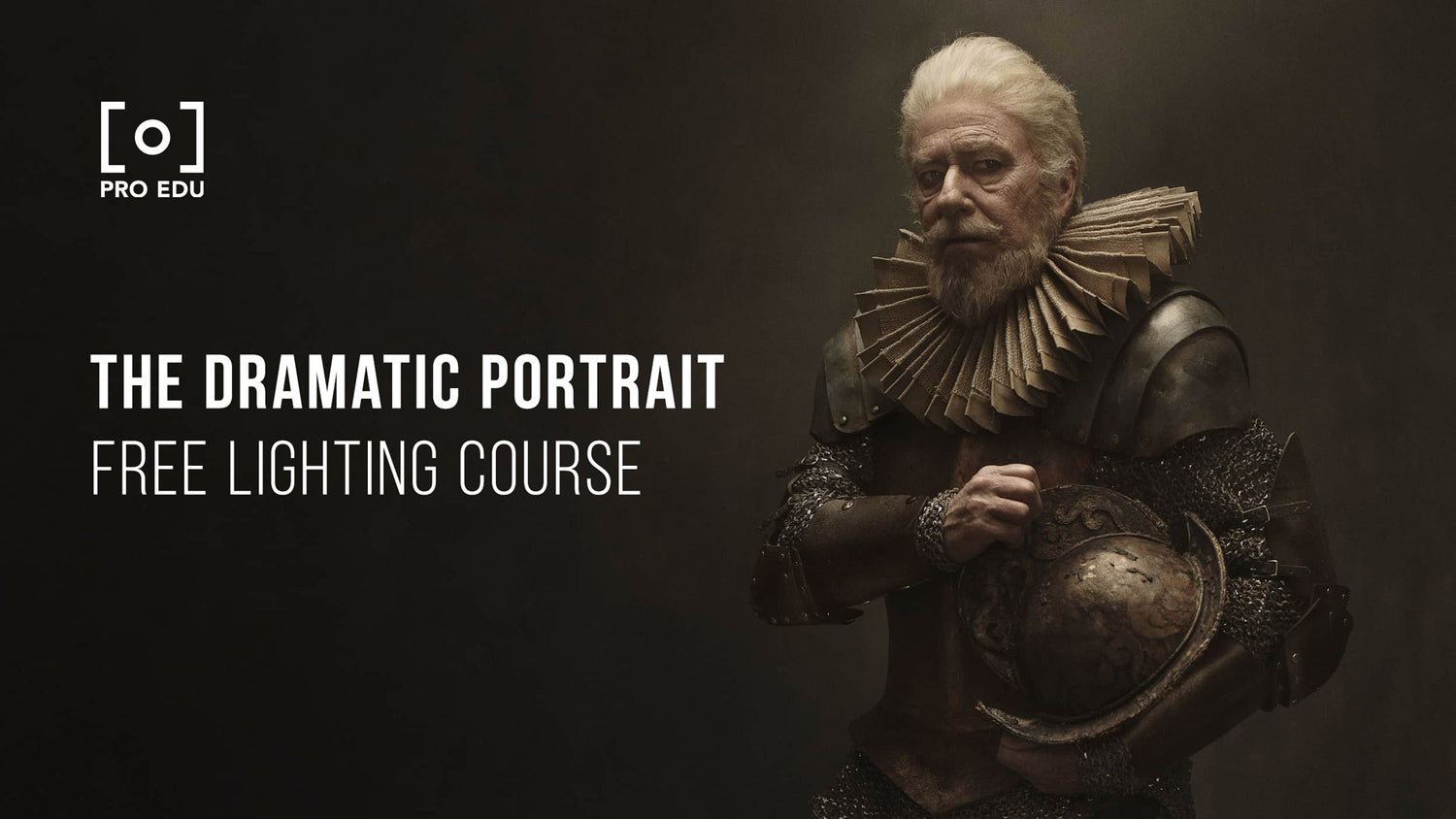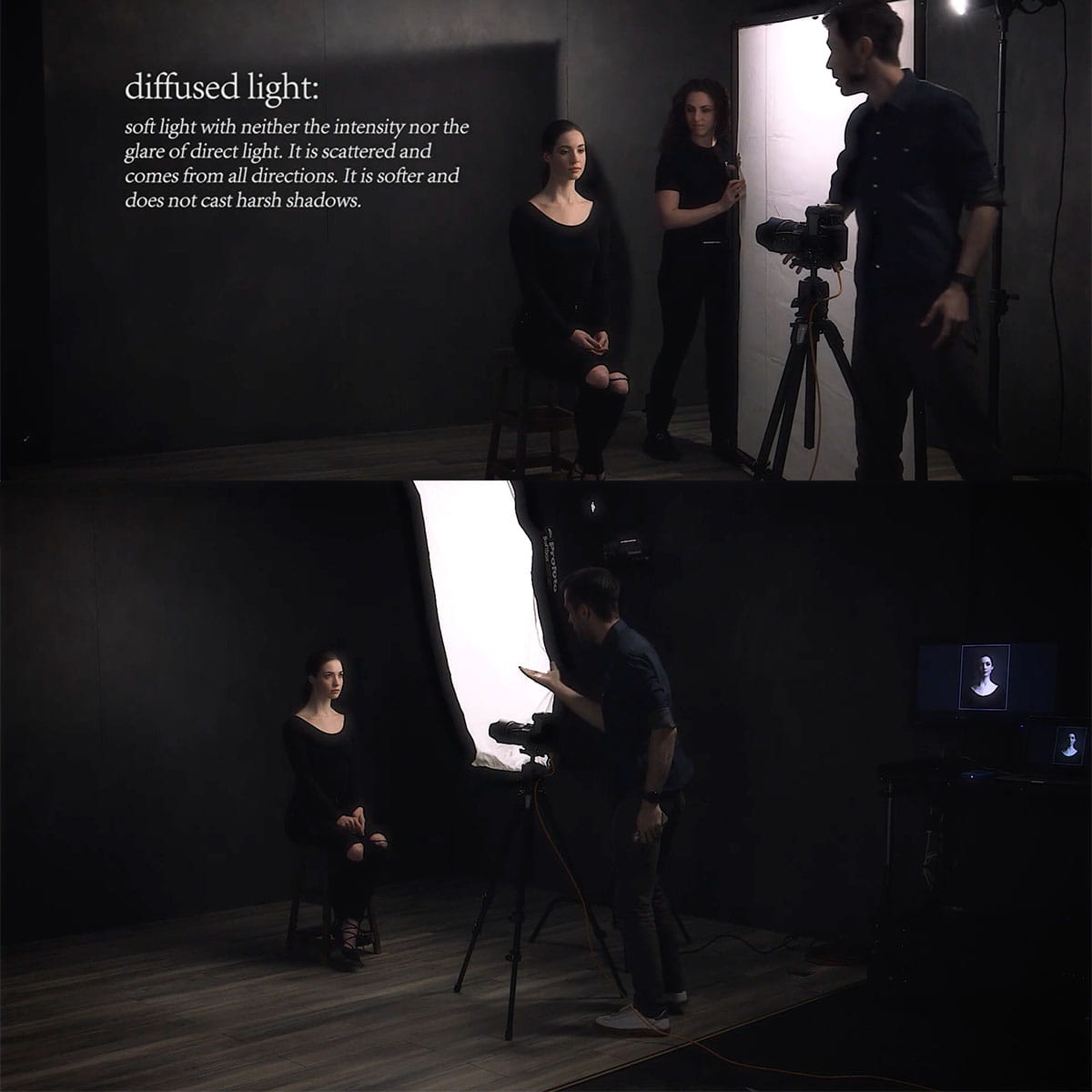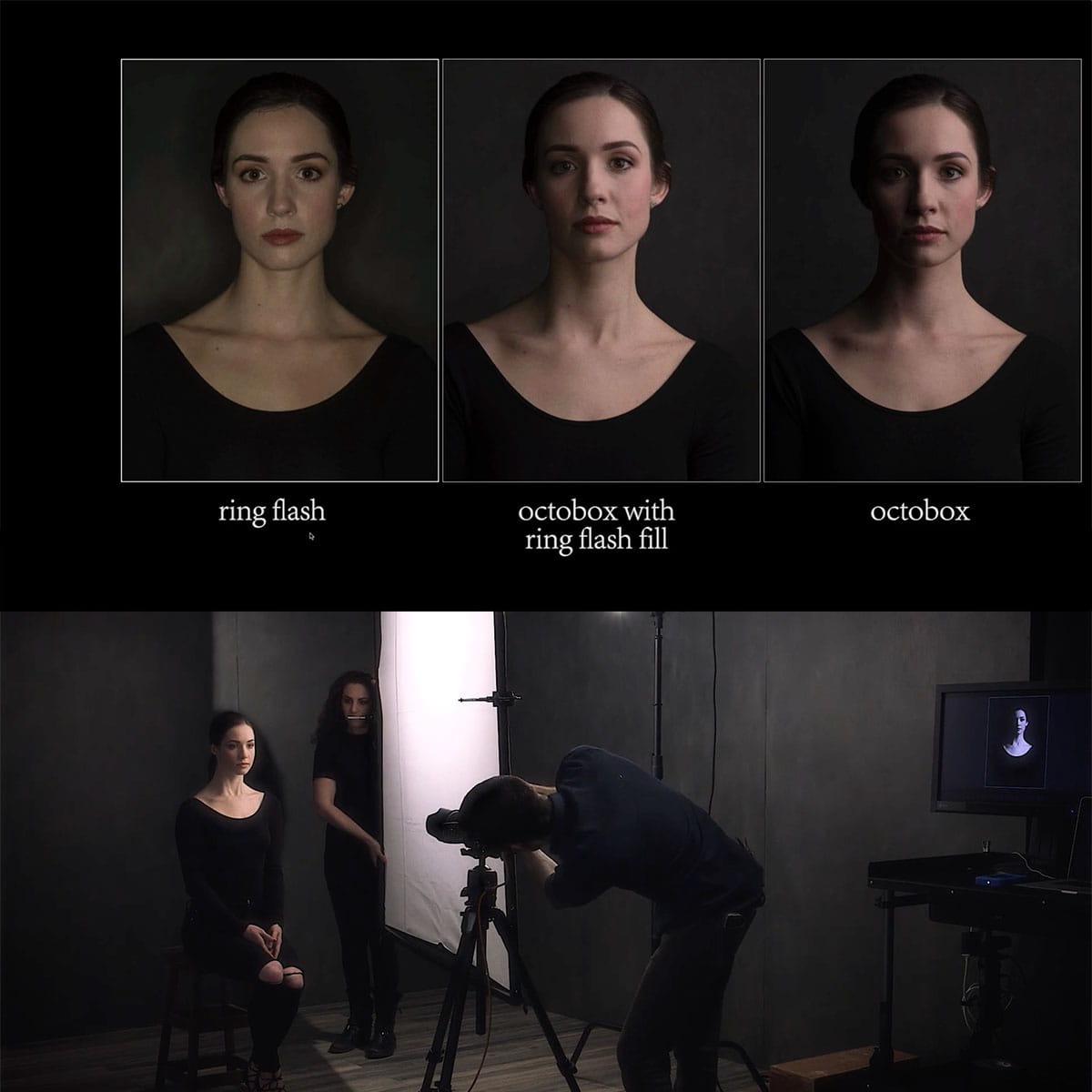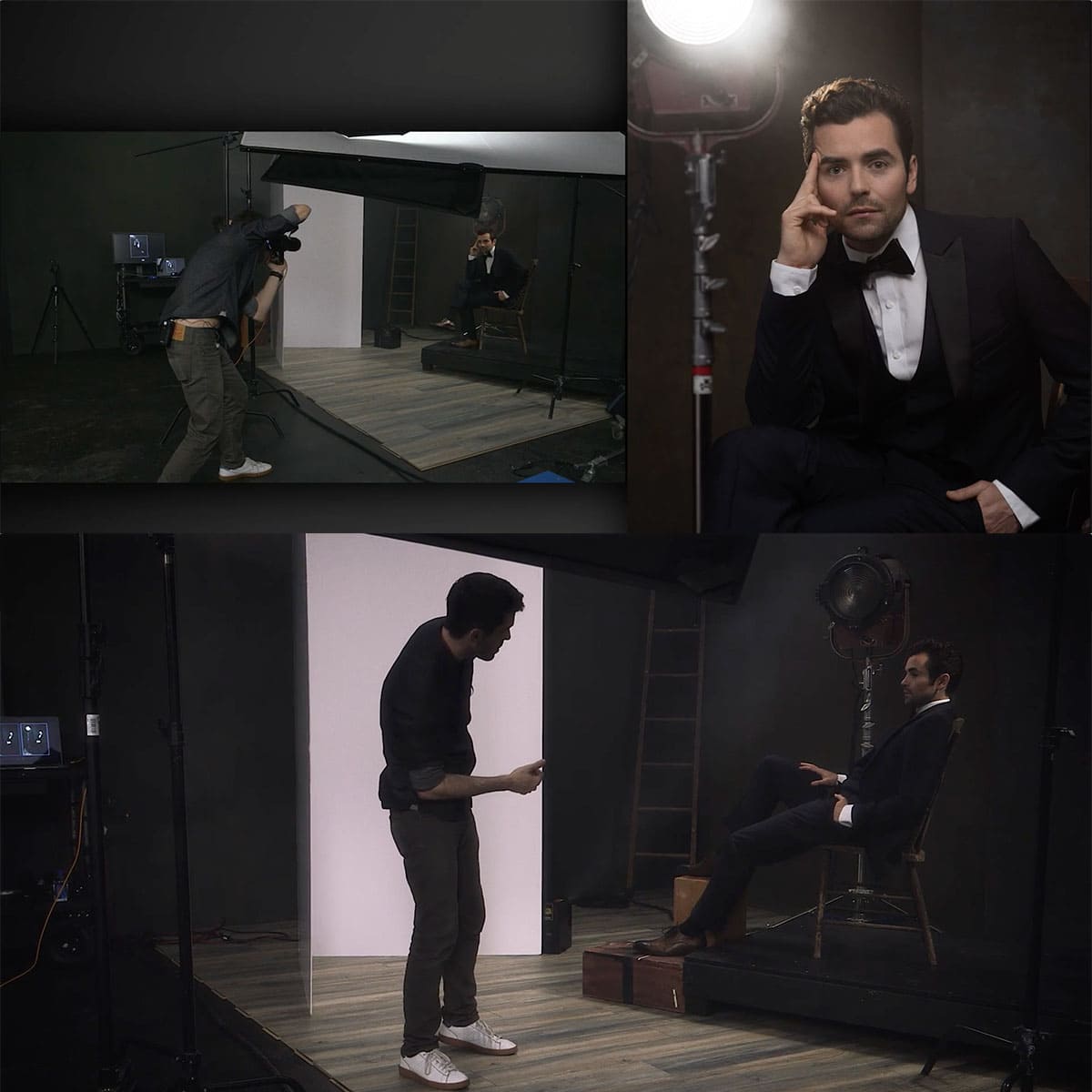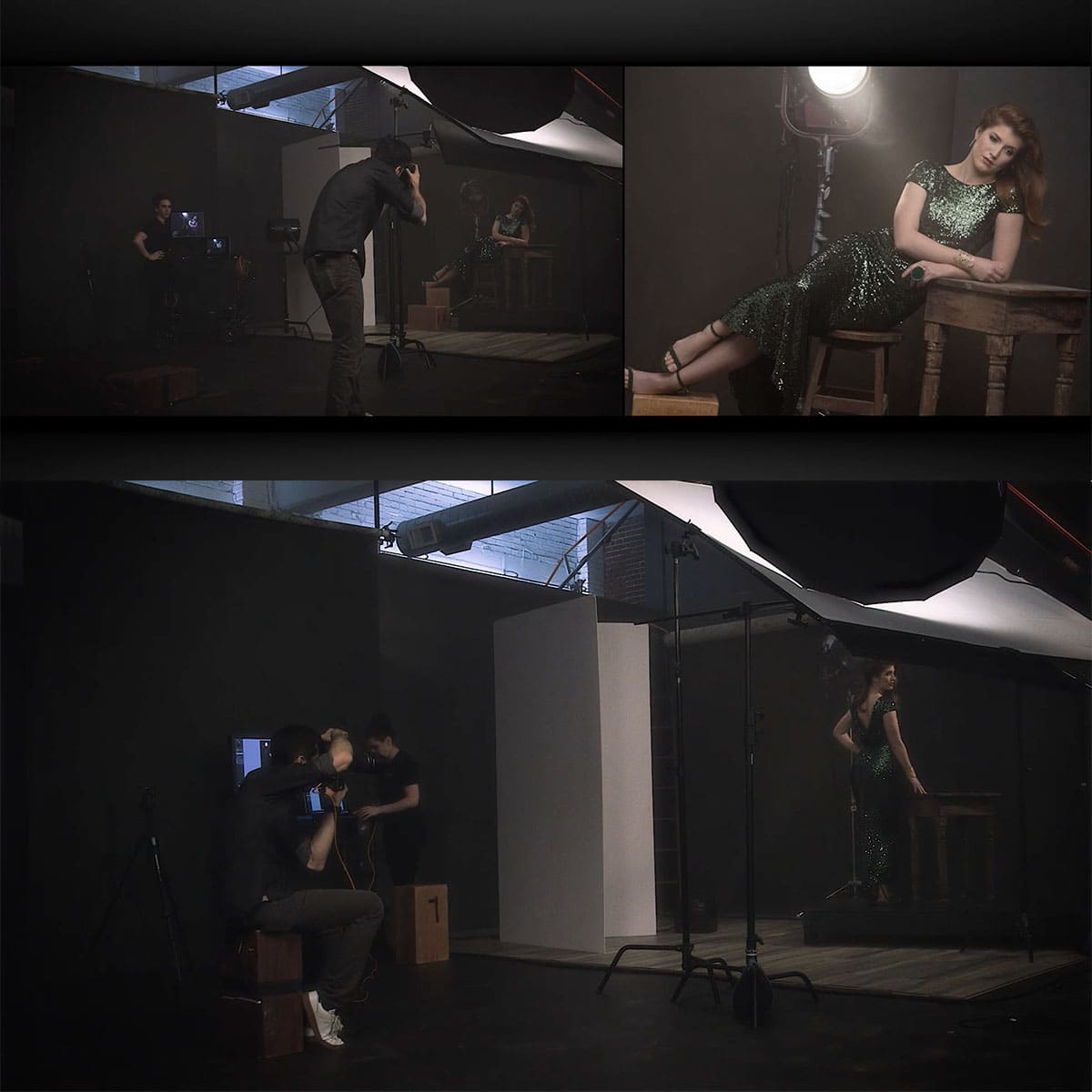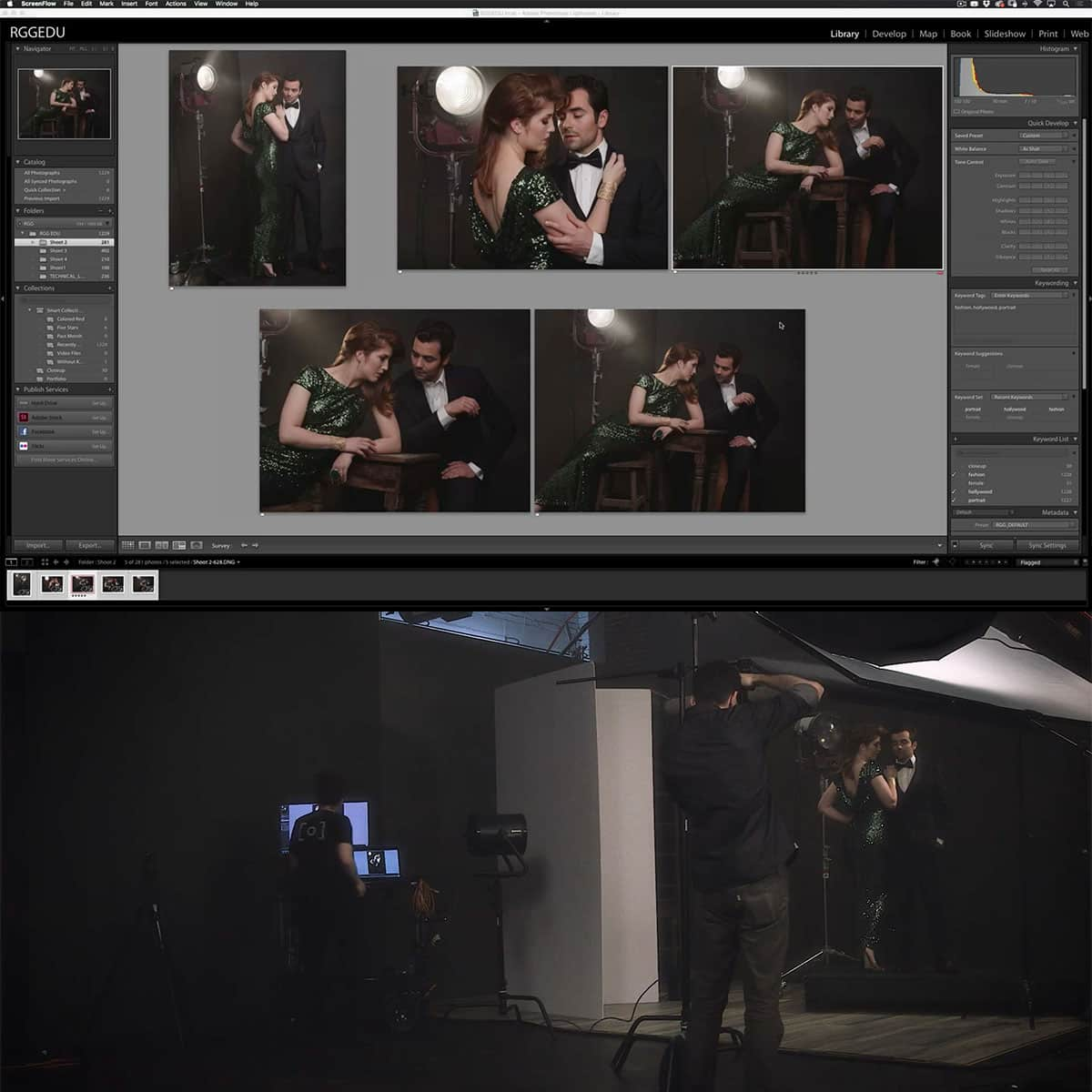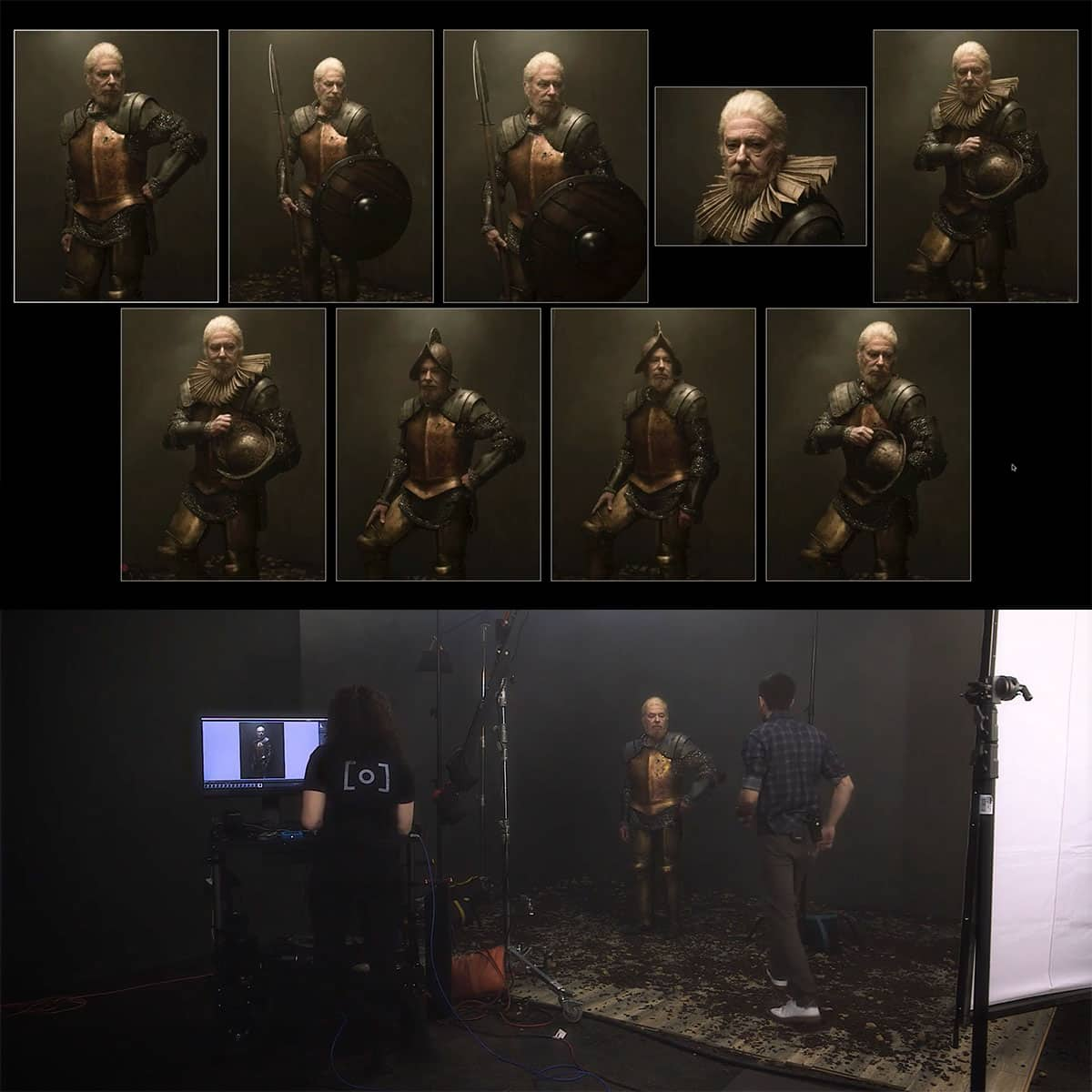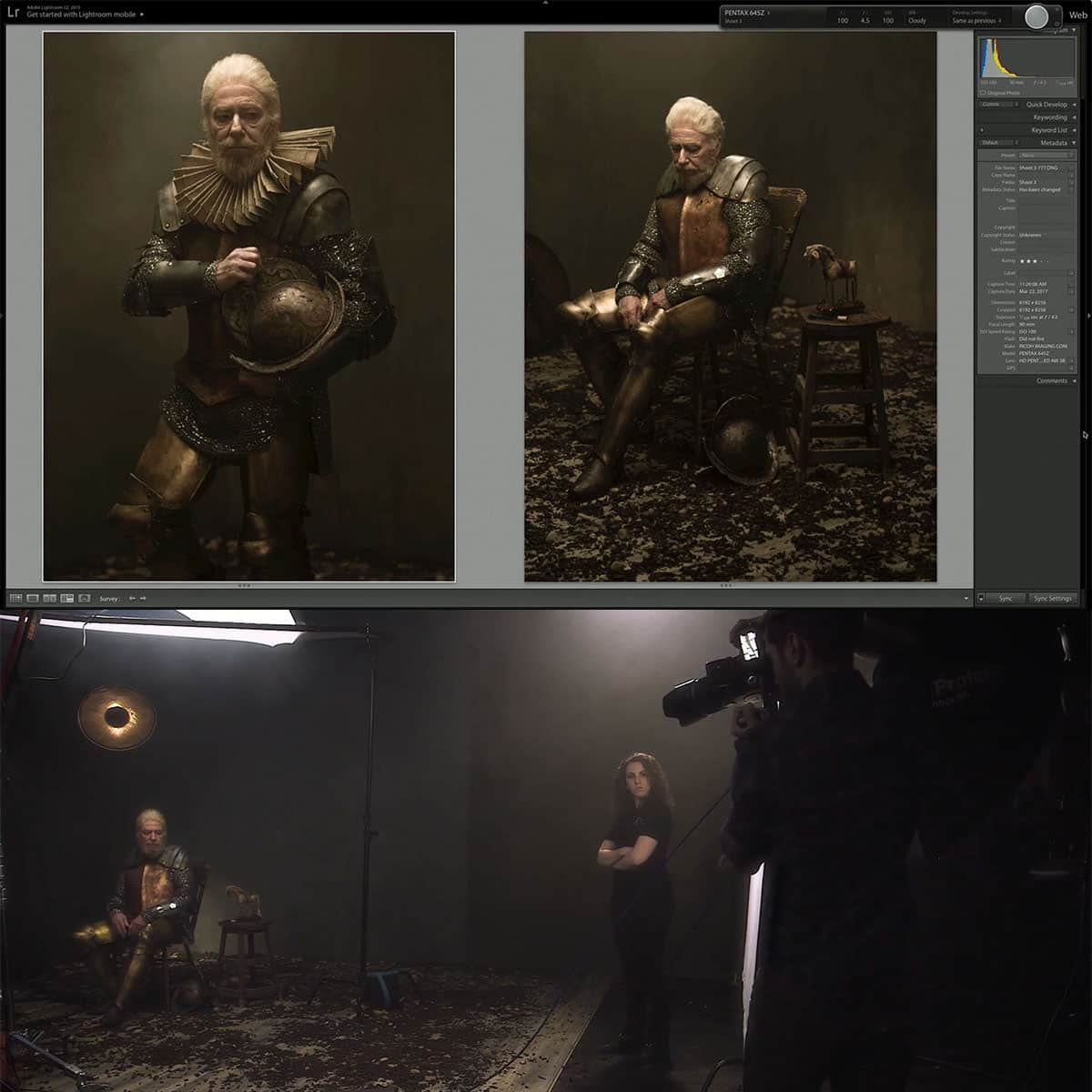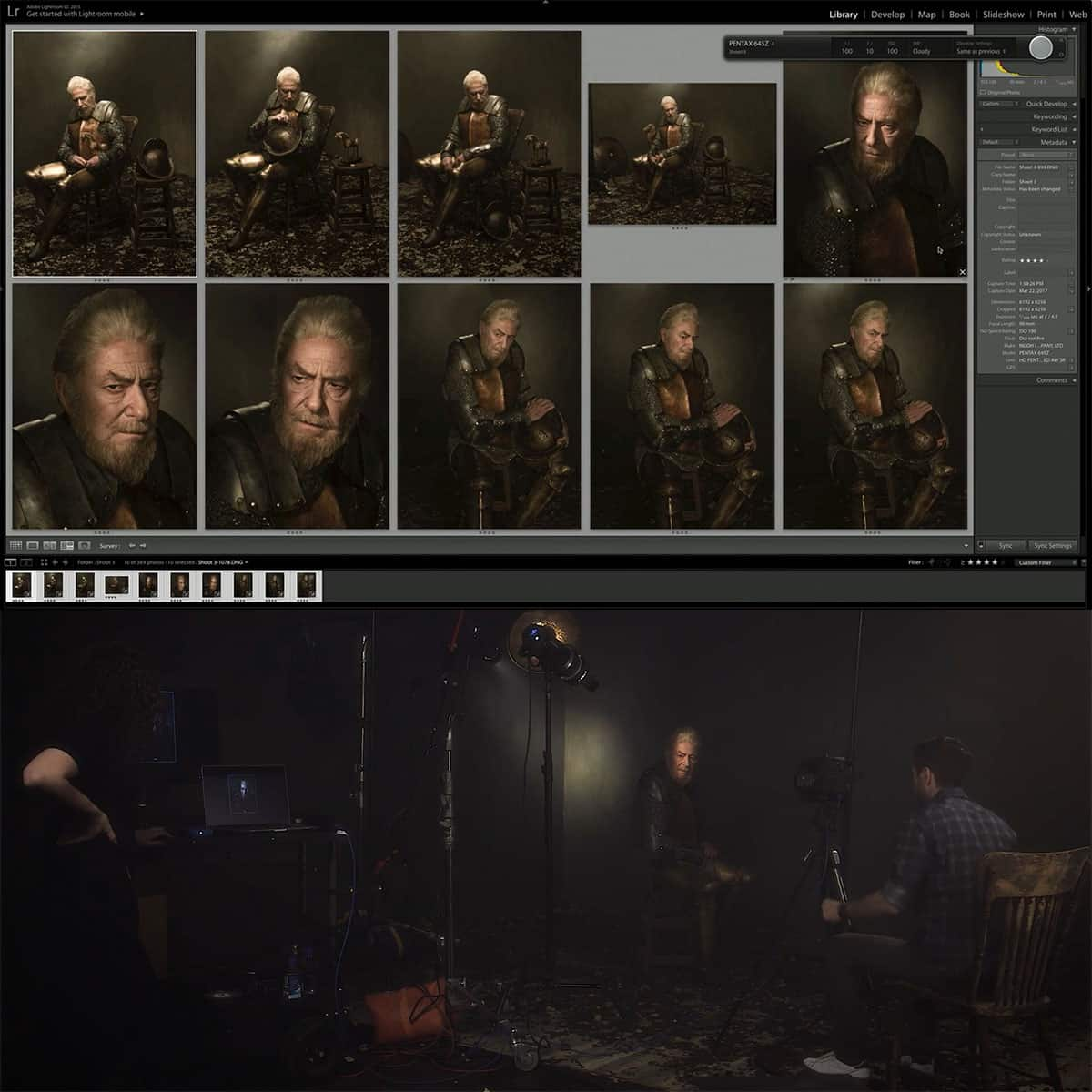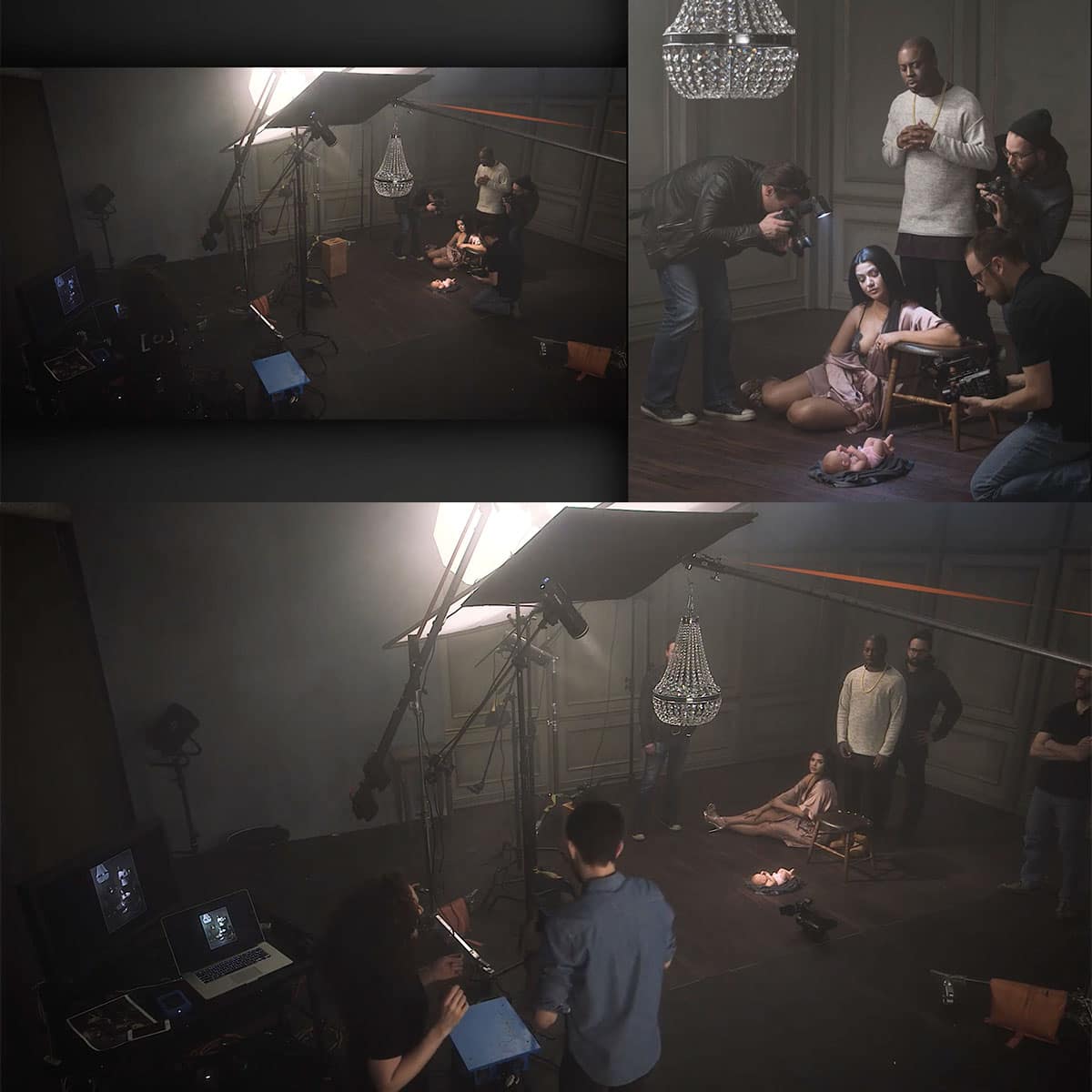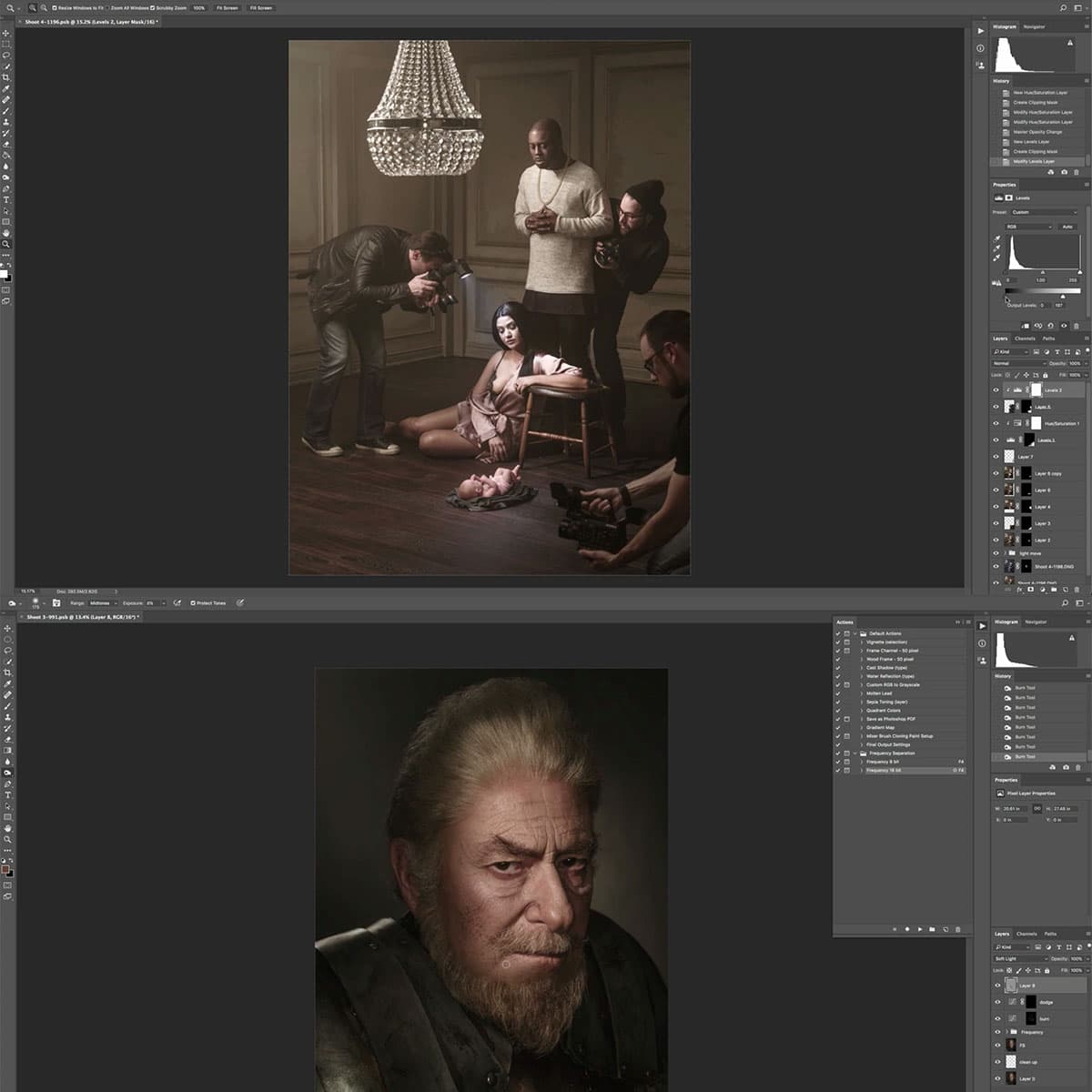Free Dramatic Portraiture & Lighting Tutorial: PRO EDU
Dramatic portraiture is a captivating style of photography that combines several essential elements to create a visually stunning image. Emotion, mood, storytelling, and lighting all contribute to the overall atmosphere and impact of a dramatic portrait.
To master this art form, photographers must understand the foundations and pillars of portraiture and learn how to use various lighting techniques and tools to shape and manipulate light. This article will introduce the basics of dramatic portraiture and provide an overview of the key components involved in creating an impactful image.
Before diving deeper into the creative techniques used in creating dramatic portraits, it is crucial to understand the essential tools and technical aspects of lighting. The proper use of these tools will not only help photographers create visually stunning images but also enhance the narrative or storytelling elements of their photographs.
Moreover, practical demonstrations of applying different lighting techniques will be covered, offering insights into the process of developing and adapting lighting setups to overcome obstacles and achieve desired results. This article aims to provide a comprehensive educational experience by combining the technical and conceptual elements of dramatic portraiture, emphasizing personal investment and versatility of techniques.
Chapter 1 from The Dramatic Portrait. Take this full course here.
Key Takeaways
- Understanding the basic tools and technical aspects of lighting is crucial for creating compelling dramatic portraits.
- Developing and adapting lighting setups helps photographers overcome obstacles and achieve their desired results.
- Balancing the technical and conceptual elements in dramatic portraiture contributes to a richer narrative and more impactful images.
Understanding Basic Tools
When diving into the world of dramatic portraiture, it's important to have a solid grasp of the basic tools and techniques that serve as the foundation for excellent photography. From lighting to storytelling, every element plays a crucial role in creating striking and emotionally impactful images. Here, we will explore some essential concepts and tools that can help you get started in mastering the art of dramatic portraiture.
Hard Light and Soft Light
Begin by understanding the difference between hard light and soft light as these are fundamental descriptors of lighting in photography. Hard light creates distinct shadows, while soft light diffuses shadows, producing a more evenly lit scene.
Understanding Human Perception in Photography
When composing a photograph, it's vital to recognize how the human brain processes and perceives visual stimuli. Factors such as the focal point, brightness, contrast, color saturation, and the presence of human faces all influence the viewer's attention and engagement with the image.
For example, the human eye is naturally drawn to the brightest area of the photograph, so knowing when and where to place light is essential in directing the viewer's eye. Additionally, consider using complementary colors and contrasting elements to create visual interest while maintaining balance within the composition.
Patterns and Breaks in Patterns
People are generally drawn to patterns and shapes that are not commonly found in nature. However, the brain tends to focus more on the break or anomaly in the pattern. Understanding this concept is crucial in creating visually compelling images.
The Importance of Mood and Storytelling
Focusing on the technical aspects of dramatic portraiture is essential, but it's also important to prioritize the narrative, or "purpose," of the shot. Make sure to think about the storytelling aspects of the photograph so that the lighting and setup complement and enhance the central theme. The dramatic elements such as darkness, shadow, contrast, expression, and mood all contribute to how the viewer perceives and connects with the image. It's crucial to learn how to direct these responses effectively.
Using a Light Meter
While some photographers might not prefer using light meters, they can be quite handy in visualizing and measuring the light within a scene. Light meters provide quick and accurate readings of light levels, which can help in making informed decisions about your photographic setup.
In conclusion, understanding the basic tools and foundational concepts is the first step in mastering the art of dramatic portraiture. As you progress in your skills and knowledge, you'll be better equipped to create visually captivating and emotionally powerful images. Always continue to hone your techniques, stay curious, and be open to learning new and creative approaches to your art.
Technical Aspects of Lighting
Creating a dramatic portrait involves utilizing various lighting techniques to evoke the desired emotions and stories. This section will focus on the technical side of lighting, discussing the behavior of light and the methods used to shape and manipulate it to achieve the desired effects.
To begin with, there are two main descriptors of light that are commonly used: hard light and soft light. Both play vital roles in creating different moods and atmosphere in a photograph.
Hard Light: Hard light creates well-defined shadows and can be used to emphasize the textures and contours of a subject. With high contrast between light and shadow, hard light is often associated with drama and intensity.
Soft Light: Soft light, on the other hand, diffuses evenly across a scene, creating smooth transitions between shadows and highlights. This type of lighting can create a more relaxed and balanced atmosphere in a portrait.
It is important to understand how the human brain perceives images in order to effectively direct the viewer's attention. Some factors that influence visual perception include:
- Middle of the image: The viewer's eyes usually start at the center of the image and work outward.
- Brightness: The brightest part of the image attracts the eyes.
- Contrast: Areas with higher contrast, either in luminance or color, also grab the viewer's attention.
- Faces: Human faces are naturally attention-grabbing, even if they are out of focus or obscured.
- Patterns: Viewers are drawn to patterns and anomalies within patterns.
When working on a dramatic portrait, it is essential to consider the purpose of the shot. Components of drama such as darkness, shadow, contrast, expression, and mood all shape the viewer's perception and feelings about a photograph. By understanding these elements and using them intentionally, the desired message or story can be conveyed effectively.
Throughout this process, it is helpful to use a light meter, such as the Sekonic L-358, to accurately measure and visualize light within a scene. While not required, using a light meter can provide a more efficient and precise way of achieving the desired light settings.
As demonstrated in the background information, continuous practice and experimentation with different lighting techniques and setups can lead to the creation of unique, complex, and dramatic portraits.
Progressive Shoots
Throughout this article, various elements of dramatic portraiture are discussed, highlighting their importance in creating a compelling visual story. It starts with covering the technical aspects of lighting, including understanding the behavior of light, shaping, and manipulating it to achieve desired results.
During the course of this piece, three different shoots are examined in depth for better understanding. Each shoot progresses from relatively simple single light setups to more complex and intricate arrangements, gradually building up on the skills and techniques learned previously. This approach is a great way to learn, similar to examining behind-the-scenes videos and images, as it allows readers to understand not only the end result but also the entire process.
Collaborative efforts are showcased with renowned photographers like Lindsay Adler assisting on set. A major focus is put into shaping and crafting light to match the purpose and narrative of each shot. It is essential to ensure that the created light supports the narrative, instead of making it the focus of the image.
Techniques discussed goes deeper than simply illuminating a subject, with an exploration of the underlying narrative and storytelling aspects. This approach makes it possible to understand the true core of the images, allowing the reader to create more meaningful and impactful photographs.
Throughout the article, the importance of understanding and directing the viewer's eyes is emphasized. Eyes tend to gravitate towards certain elements such as the center of the image, highly saturated colors, areas of contrast, and human faces. Being conscious of these natural tendencies is helpful for creating a successful dramatic portrait that guides the viewer's attention.
Finally, the progressive shoots allow readers to learn and understand various ways to use light in portraiture, starting with basic setups and building up to more intricate arrangements. By covering qualities such as hard light and soft light, the article ensures that the reader becomes well-adaptive throughout, making them versatile in the art of dramatic portraiture.
Behind the Scenes Exploration
Dramatic portraiture encompasses various vital elements, such as emotion, mood, storytelling, and lighting. This article delves into the foundations and pillars of portraiture, specifically focusing on the technical side of lighting. Unraveling how light behaves, ways to manipulate it, and how to put it to work, the article aims to provide a comprehensive understanding of the language of light.
Tools and Techniques
When learning the intricacies of lighting, it is essential to start with examining the technical aspects – how light behaves, how it can be shaped and manipulated, and how it can be utilized to achieve desired effects. A comprehensive understanding of the technical side will enable artists to adopt more complex techniques, ultimately allowing them to create dynamic, unique, and well-crafted images.
Throughout this exploration, the use of a light meter, such as a Sekonic 358, is highly recommended. These devices offer a quick and efficient way to read and visualize light within a scene, assisting the artist in crafting their desired outcome.
Applying Technical Lighting to Real-Life Scenarios
The practical application of technical lighting techniques in real-life scenarios enables photographers to develop their skills and confront obstacles that may arise. Working through various shoots, artists can build on the fundamentals of technical lighting and continually refine their craft.
Importance of Narrative and Storytelling
A crucial aspect of dramatic portraiture is the narrative or storytelling behind each shot. The idea and purpose of the image should be the central focus, with the lighting crafted to enhance and fulfill that central narrative. It is essential to dig deep into the concept, examining not only the technical elements of shoot, lighting, and setup, but also the meaning and narrative of each image.
Aiding Perception and Directing the Eye
Understanding how viewers perceive images and knowing what aspects the human brain focuses on first are essential for photographers to create the desired visual effects. Some critical elements to consider include:
- The middle of the image: Our eyes naturally gravitate toward the center before moving outward.
- Brightness: We are attracted to the most luminous parts of an image, making this an essential tool for guiding the viewer's eye.
- Contrast: Our eyes are drawn to areas with high contrast, either in luminance or color.
- Human faces: We recognize faces, even if they are out of focus or obscured, making them a compelling subject matter.
- Patterns and shapes: We are drawn to repetitive patterns, searching for breaks in the patterns that can make for an interesting visual experience.
By focusing on these principles, photographers can reinforce or intentionally break perceptions, guiding the viewer's eye to achieve their desired outcome.
In conclusion, dramatic portraiture relies heavily on the understanding and application of technical lighting, as well as the deeper narrative and storytelling behind each image. By exploring these elements, photographers can create compelling and meaningful dramatic portraits that captivate viewers.
Single Light Setup
The dramatic portrait incorporates emotion, mood, storytelling, and lighting. It's essential to understand the foundations and elements of portraiture to create the perfect dramatic portrait. This section will focus on the single light setup, revealing how to use a single source of light effectively.
There are two main descriptors of light that will be addressed: hard light and soft light. Both of these are essential in determining the overall feel and look of the portrait.
Hard Light
Hard light creates distinct shadows and a high level of contrast. It emphasizes texture and shape, making it fitting for dramatic portraits. To achieve hard light, place the light source close to the subject and ensure it's a relatively small light source compared to the subject. This type of lighting works best with a monolight, such as the Profoto D2.
Soft Light
Soft light is less intense, producing gradual and smooth shadows. To create soft light, place the light source further away from the subject and ensure it's a larger source compared to the subject. This type of light adds a gentler, more even tone to the portrait.
In addition to hard and soft light, it's important to understand the direction of the light. The direction plays a significant role in shaping the subject's face and creating depth in the portrait.
- Frontal lighting: Light comes from the same direction as the camera and illuminates the entire subject. This type of lighting is suitable for a flat appearance, but may lack drama.
- Side lighting: Light comes from one side of the subject and creates a strong sense of depth by accentuating the contours of the face.
- Backlighting: Light comes from behind the subject and can create a silhouette effect, which can add a dramatic and mysterious feel.
To control the impact of the single light setup, consider using a light meter. This tool measures the amount of light in a scene and provides a quick way to visualize what's happening. Although it's not required, a light meter can make adjusting your lighting setup more efficient and precise.
Understanding the single light setup is the foundation for creating dramatic portraits. With the knowledge of hard and soft light, as well as the directionality of light, it becomes easier to manipulate light effectively and fulfill the narrative of the portrait.
Overcoming Obstacles
When engaging in dramatic portraiture, it's essential to understand the fundamentals of lighting and storytelling to ensure a successful outcome. It can be an intimidating process, involving decisions about lighting types, positioning, and power settings. However, by breaking it down step-by-step and focusing on mastering the tools and techniques, one can overcome these challenges and achieve desired results.
Begin by familiarizing yourself with the technical aspect of lighting to identify how it behaves, affects the subject, and can be manipulated to work in your favor. It is essential to establish a solid foundation to build upon and create more intricate setups for dynamic portraits.
During the course of a shoot, challenges and obstacles will arise. It's crucial to be adaptive and find effective ways to work around these issues. Collaboration with experienced professionals and colleagues can be highly valuable in this aspect. Furthermore, staying focused on storytelling and the narrative behind each shot ensures that lighting and technical aspects enhance rather than overpower the purpose of the image.
Key factors that influence viewer perception and should be kept in mind include:
- The middle of the image: Viewers tend to notice elements in the center of an image first and then work outward.
- Brightest part of the image: The luminance is an essential aspect of directing a viewer's attention.
- Areas of contrast: Contrast, whether through luminance or color, is something that the human eye is naturally drawn to.
- Human faces: Recognition of faces is a powerful factor in determining where a viewer looks in an image.
- Patterns: A viewer's eye will be drawn to patterns, especially breaks in patterns that stand out.
Always keep the purpose of the shot at the forefront when creating dramatic portraits. Incorporate elements such as darkness, shadow, contrast, expression, and mood to shape the viewer's perception and feelings about a photograph successfully. By understanding these essential aspects and overcoming the obstacles they may present, one can create striking and impactful images in the world of dramatic portraiture.
Role of Narrative in Creating Dramatic Portraits
When creating a dramatic portrait, numerous factors play a vital role in producing a captivating image. Among them are lighting, emotion, mood, and, most importantly, the narrative or story underlying the portrait. By understanding the significance of narrative, one can harness the power of light and strategically apply various techniques to enhance the story being told.
In order to use lighting effectively, it is crucial to grasp the fundamentals of how light behaves, shapes, and interacts with various elements of a scene. Doing so enables the photographer to manipulate lighting to evoke specific emotions or moods that correspond to the desired narrative. This not only ensures a harmonious relationship between lighting and storytelling but also contributes to the overall impact of the portrait.
Experimenting with different lighting techniques, from simple single light setups to more intricate, complex arrangements, allows for artistic expression and flexibility in truly bringing a story to life. Overcoming challenges and fine-tuning lighting according to the needs of the narrative also helps in fulfilling the photographer's creative vision.
Complimentary to lighting, the visual aspects within a portrait play an essential role in guiding the viewer's eyes through the image. By understanding how the human brain perceives images, photographers can make informed decisions on emphasizing or breaking certain patterns. Elements such as brightness, contrast, color saturation, and even the presence of human faces within the portrait, all contribute to how effectively a story is conveyed to the audience.
In dramatic portraiture, the use of darkness, shadow, contrast, expression, and mood work in tandem to affect the viewer's perception and feelings towards the image. As such, understanding how to direct these responses is fundamental to successful storytelling through portraiture. By focusing on the narrative and its underlying purpose, a photographer can construct captivating, emotionally charged, and meaningful portraits, leaving a lasting impression on the viewer.
Technical Elements Versus Conceptual Components
While working on creating dramatic portraits, it is crucial to understand the difference and importance of technical and conceptual elements. These elements essentially work together in shaping the visual impact and meaning of images.
Technical Aspects
The technical elements involve the use of tools such as lighting and equipment to craft and shape the scene. Some important aspects of lighting to consider are:
- Hard light and soft light
- Directing the viewer's eye using brightness, contrast, and saturation
- Recognizing patterns and breaking those patterns to create visual interest
Understanding these aspects and putting them into practice allows the artist to manipulate light efficiently and create visually captivating images.
Conceptual Components
The conceptual aspects are the underlying meaning or narrative behind the portrait that drives the technical choices made during the shoot. Some critical elements to focus on during a portrait session include:
- Purpose or goal of the shot
- Storytelling or narrative
- Expression and mood
These elements are crucial in giving the portrait substance and impact beyond the visual appeal. A strong narrative makes the image engaging and can enhance the connection between the subject and the viewer.
In conclusion, the balance and interplay of technical and conceptual aspects play a significant role in crafting impactful dramatic portraiture. Mastering these components, including lighting and storytelling, leads to photographs with depth, substance, and visual appeal.
Personal Investment in Photography
One of the most important aspects of dramatic portraiture is how personal investment affects the quality of work produced. Laboring over personal projects, devoting time and effort to the planning and production stages, all contribute to an enriching educational experience.
Throughout the process, photographers may encounter various problems and obstacles. Fortunately, with the development of skills and techniques, these challenges become opportunities for growth. The focus should always be on creating captivating narratives and utilizing lighting to enhance them, and not the other way around.
When working on a project, it is essential to begin with fundamental concepts and gradually build upon them to create more elaborate and visually intriguing sets. Even if the set appears to be large, employing universal concepts and methods will enable photographers to adjust their work for any scale.
Understanding where the eye is drawn is of utmost importance. For example, the brightest part of an image will attract attention first. Adopting tricks, such as controlling the saturation of different areas, helps direct the viewer's gaze where desired.
In summary, investing time, effort, and emotion into one's work is critical for developing a unique, striking, dramatic portraiture style. By understanding and manipulating visual elements and lighting, photographers can tell compelling stories through their images.
Versatility of Techniques
The dramatic portrait encompasses a variety of elements that are essential for truly capturing the essence of the subject. Emotion, mood, storytelling, and lighting all play important roles in the creation of these dynamic images. In order to maximize the potential of dramatic portraiture, it is crucial to understand the foundational aspects of these various techniques and learn how to adapt them for different scenarios and concepts.
When it comes to lighting, understanding the technical side is key to mastering the art of dramatic portraiture. This starts with learning about the properties of light, how it behaves, how to shape and manipulate it, and how to use it effectively in order to achieve the desired effect. As the process progresses, the techniques learned can be built upon and adapted to create more intricate and detailed setups that range in complexity.
Exploring different shoots and learning from various scenarios can aid in the development of these techniques. It is important to dissect and analyze larger sets in order to understand how the foundations of lighting can be applied to larger-scale projects. This in turn can lead to the creation of unique and dynamic setups that can truly capture the essence of the subject.
However, lighting is not the only aspect that contributes to successful dramatic portraiture. Narrative and storytelling play an equally important role in the process. Prior to focusing solely on the technical aspects, it is essential to consider the purpose of the shot and how the narrative can be fulfilled through light and other elements.
Analyzing the concept behind an image is an integral part of the process, as it holds the key to understanding the intent and purpose of the shot. This process can yield insights that prove more valuable than simply mastering the technical aspects of lighting and layout.
In summary, the versatility of techniques in dramatic portraiture is essential for producing captivating and powerful images. By understanding the foundational aspects of lighting, narrative, and storytelling, these techniques can be adapted and manipulated to fit any scenario or concept. This expertise, in turn, can lead to the creation of dramatic portraits that effectively capture the story of the subject as intended.
Perception of Photographs
In creating dramatic portraiture, it is essential to understand the way humans perceive photographs. Our brains are wired to notice certain elements in images first, which can be either reinforced or intentionally broken by the image maker.
- Center of the image: We tend to notice things in the middle of the image first and then work our way towards the edges.
- Brightest part: Our eyes are naturally attracted to the most luminous part of the image, making it a powerful tool to direct the viewer's attention.
- Areas of contrast: We are drawn to areas with high contrast, either in luminance or complementary colors.
- Highly saturated colors: We notice highly saturated colors more than less saturated ones, with warm colors standing out more than cool ones. However, it's important to avoid overwhelming the viewer by using pockets of saturation strategically.
- Human faces: We are quick to recognize faces, even those that are out of focus or obscured. There is a hierarchy of visibility that includes faces in focus, looking at the camera, not looking at the camera, out of focus, and finally full bodies with no discernable face.
- Patterns and anomalies: We are drawn to patterns, shapes, and anomalies in images. Moreover, our brains tend to look for breaks in patterns, which can be visually captivating.
Understanding what viewers notice first in an image helps in crafting dramatic portraits. Utilizing elements like darkness, shadow, contrast, expression, and mood can effectively shape a viewer's perception and feelings about a photograph. It is crucial for photographers to know how to direct the response of their audience and align it with the purpose of the shot.
Controlling Viewer's Perception
In dramatic portraiture, emotion, mood, storytelling, and lighting play significant roles. Understanding how these elements interact forms the basis for creating powerful portraits. This section aims to discuss the use of light in controlling the perception of the viewer.
Hard Light and Soft Light
The two main descriptors of light are hard light and soft light. Hard light creates bold shadows and emphasizes contrast, while soft light results in a more even distribution of light and softer shadows.
Directing the Viewer's Eye
There are several ways to direct the viewer's eye within an image:
- Center of the Image: Viewers tend to notice the content in the center first.
- Brightness: The eye is drawn to the most luminous part of the image.
- Areas of Contrast: Human eyes gravitate towards contrast, either through luminance or color (especially complementary colors).
- Saturation: Highly saturated colors, particularly warm ones, capture attention. Using pockets of saturation can help guide the viewer's eye.
- Human Faces: We are wired to recognize faces, even out-of-focus or obscured ones.
- Patterns: Viewers are drawn to patterns and their breaks, which they find visually compelling.
Purpose of the Shot
Understanding the purpose of the shot and how the components of drama (darkness, shadow, contrast, expression, and mood) interact is essential in shaping the viewer's perception. As an image-maker, it's crucial to know how to direct the response of the viewer.
Lighting Tools and Techniques
An essential aspect of shaping and crafting light is understanding the technical side of lighting—knowing how light behaves, how it can be manipulated, and using the right tools. From simple single light setups to more elaborate multi-light setups, knowledge of these techniques helps create dynamic, unique, and visually compelling images.
In controlling the viewer's perception, the key is to be intentional about how light is used, whether by reinforcing certain aspects or breaking perceptions by using unexpected lighting techniques. Ultimately, the mastery of lighting, storytelling, and directing the viewer's eye will enable the creation of powerful dramatic portraits.
Two Main Descriptors of Light
In the world of photography and lighting, understanding the fundamentals is crucial for creating stunning images. Two main descriptors of light that are commonly used are hard light and soft light. These terms describe the different behaviors of light and how they affect the subject of the photograph.
Hard Light
Hard light is a type of lighting that creates sharp, well-defined shadows and high contrast within an image. It can be a powerful tool for adding drama and intensity to a photograph. Hard light can be produced by using a smaller light source, such as sunlight on a cloudless day or a focused spotlight. The smaller the light source, the harder the light will be.
Soft Light
On the other hand, soft light produces a more diffused and even appearance, filling in shadows and reducing contrast. Soft light is achieved when using a larger light source or when light is scattered and diffused through objects like clouds or a softbox. This type of lighting creates a more flattering and gentle look, often preferred for portraits.
An important tool photographers often use is the light meter. A light meter helps to read and visualize light within a scene, providing a quick and accurate way to measure light levels and make adjustments. Using a light meter is not required, but it can be incredibly useful in understanding how different qualities of light affect an image.
When choosing between hard and soft light, it's essential to consider the purpose of the shot. The use of these light characteristics plays a crucial role in shaping the mood, narrative, and overall perception of the photograph. By understanding and mastering the different qualities of light, you can effectively control the visual impact of your images, crafting dramatic and captivating pieces.
Comparing Hard and Soft Light
In dramatic portraiture, understanding the different qualities of light is crucial for crafting the desired atmosphere and mood. Two primary descriptors of light often used in photography are hard light and soft light. Both types have unique characteristics that can be used to create specific effects and convey emotions in an image.
Hard Light
Hard light is characterized by its sharp, defined shadows and strong contrast between light and dark areas. It creates a dramatic effect, emphasizing texture, detail, and the three-dimensional quality of the subject. Some examples of hard light sources include direct sunlight, a bare lightbulb, or a focused spotlight.
Advantages of hard light:
- Creates dramatic and intense images
- Brings out texture and detail
- Enhances three-dimensionality
Soft Light
Soft light is characterized by its diffused, subtle transitions between light and shadow. It gently wraps around the subject, reducing the appearance of texture and detail while creating a sense of depth. Examples of soft light sources include an overcast sky, a window with diffused light, or a large light source placed close to the subject.
Advantages of soft light:
- Creates a sense of calm and serenity
- Reduces harsh appearance of texture and detail
- Enhances depth and provides even illumination
| Characteristic | Hard Light | Soft Light |
|---|---|---|
| Shadows | Sharp, defined | Soft, diffused |
| Contrast | High | Low |
| Texture/Detail | Emphasized | Subdued |
| Mood/Emotion | Dramatic, intense | Calm, serene |
| Depth | Enhanced | Subtle |
In conclusion, hard light and soft light can be used to create various effects and evoke emotions in a photograph. By understanding the characteristics and advantages of each type, you can make intentional choices about how to shape and craft light in your portraits to achieve the desired atmosphere and mood.
Practical Demonstration
In this section, we will examine the essential elements of dramatic portraiture and explore various lighting techniques. We will begin by discussing the technical side of lighting, understanding how light behaves, and learning ways to shape and manipulate it. This knowledge will help create a solid foundation for more complex setups in the future.
The following points will be covered in this demonstration:
-
Hard light and soft light: These are the two main descriptors of light commonly used in photography. Hard light refers to strong, direct light that often produces sharp shadows, while soft light is diffused and creates a more subtle shadow. Both qualities are essential in capturing dramatic portraiture.
-
Fundamentals of Technical Lighting: To master complex and dynamic lighting setups, it's crucial to understand the fundamental principles of technical lighting. These basics include the use of a light meter, which helps measure and visualize light in a scene. Familiarizing yourself with these principles will enable you to create dramatic portraits effectively.
-
Narrative and Storytelling: Beyond the technical elements of a shoot, the most crucial aspect is the narrative or story behind the shot. Creating a captivating narrative will help establish the purpose of the image and set the stage for the lighting techniques used. It is essential to keep this in mind while planning and executing a portrait shoot.
-
Directing the Eye: As image-makers, understanding how our eyes perceive an image is vital. Some factors that draw our attention include brightness, contrast, color saturation, human faces, and patterns. Knowing how to manipulate these factors will enable you to direct the viewer's eye and create a more engaging image.
To apply these concepts in practice, we will work through three different shoots, starting with a simple single light setup. Throughout the process, we will encounter challenges and obstacles that will require problem-solving and creativity. We will also be collaborating with other professionals in the field, providing valuable insights and shared knowledge.
The principles and techniques in this demonstration will be applicable in various scales—whether you are working on a large set or a smaller space. With a solid understanding of light behavior and manipulation, combined with a strong narrative focus, you will be able to create stunning, dramatic portraits that captivate and engage your viewers.


